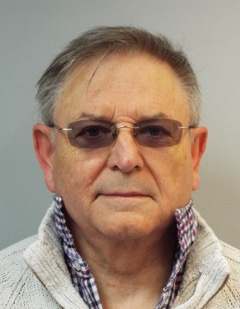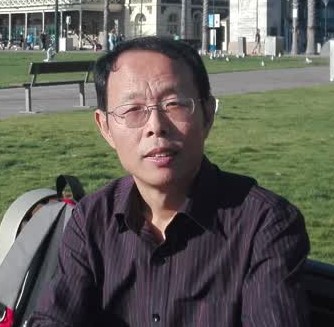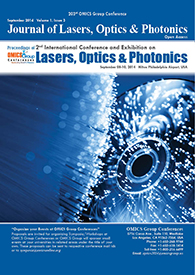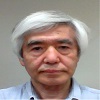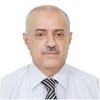Theme: Together Towards Tomorrow; Discover, Invent, Educate in the plasmic realm of Physics
Plasma Physics Asiapacific 2018
Its our pleasure to welcome you all to the ‘plasma physics 2018’ The conference adopts a timely theme “Together Towards Tomorrow. Discover, Invent, Educate in the plasmic realm of Physics’’.
This conference aims to bring together the prominent researcher’s academic scientists, and research scholars to exchange and share their experiences in each and every allied concept of Plasma Physics. The Committee is looking forward to organizing an exceptional meeting with new and interesting sessions and discussion and to meet new people where you can share your subject and passion.
The conference on plasma physics will focus on many interesting and knowledge empowering & enhancing scientific sessions and covers all frontier topics & concepts in Plasma Physics.
Conference highlights on:
- Space Physics
- Plasma Temperature
- Magnetization
- Plasma Potential
- Dusty plasmas and grain plasmas
- Thermal plasmas/hot plasmas
- Non-thermal plasma/cold plasmas
- Active Plasmas
- Nuclear physics
Importance:
Physics touches every aspect of our lives. It involves the study of matter, energy and their interactions. As such, it is one area of science that cuts across all other subjects. Other sciences are reliant on the concepts and techniques developed through physics.
Plasma Physics is the study of a state of matter comprising charged particles. Plasma can only be artificially generated by heating or subjecting a neutral gas to a strong electromagnetic field to the point an ionized gaseous substance becomes increasingly electrically conductive, and long-range electromagnetic fields dominate the behavior of the matter.
This is so called Ionization can also be achieved using high power laser light or microwaves. plasmas are found naturally in stars and in space.
Track 1: Plasma Physics
Plasma physics is the study of a state of matter comprising charged particles. Plasmas are usually created by heating a gas until the electrons become detached from their parent atom or molecule. This so-called ionization can also be achieved using high-power laser light or microwaves. Plasmas are found naturally in stars and in space.
Lightning is an example of plasma present at Earth's surface. Typically, lightning discharges 30,000 amperes at up to 100 million volts, and emits light, radio waves, X-rays and even gamma rays. Plasma temperatures in lightning can approach 28,000 K (28,000 °C; 50,000 °F) and electron densities may exceed 1024 m−3.
Related Conferences: Physics Conferences | Optics Conferences | Physics Conferences | Astronomy Conferences | Photonics Meetings
APS 42nd Annual Australia/New Zealand Condensed Matter and Materials Meeting, January 30-February 2, 2018, Wagga Wagga, Australia ,International Conference on Quantum physics, Optics and Laser Technologies, May 9-10, 2018 Tokyo, Japan, International conference on Astronomy and Astrobiology, May 30-31, 2018, Osaka, Japan, 3rdInternational conference on Nuclear and Plasma Physics, June 07-08, 2018, London, UK, International Conference and Expo on Condensed Matter Physics, 2018
Related Societies:
Asia Pacific:
Astronomical Society of Australia | Physical Society of Hong Kong | Physical Society of the Republic of China | Plasma Science Society of India | Optical Society of Japan | Nepal Physical Society
Europe:
Austrian Physical Society | Optical Society | Photonics Society of Poland | Physical Society of London | Estonian Physical Society | Italian Physical Society | International Association of Mathematical Physics | International Society on General Relativity and Gravitation | Italian Society for General Relativity and Gravitation | Society of Physics Students
USA:
American Physical Society | Optical Society | American Crystallographic Association | American Physical Society | Canadian Association of Physicists | Mathematical Association of America
Track 2: Space Physics
Space physics is the study of plasmas as they arise naturally in the Earth's upper atmosphere. It includes heliophysics which includes the solar physics of the Sun: the solar wind, planetary magnetospheres and ionospheres, cosmic rays. It is an essential part of the study of space weather and has important consequences not only to understand the universe, but also to practical everyday life, and also includes the process of communications and weather satellites. Space physics uses measurements from high altitude rockets and spacecraft.
Related Conferences: Physics Conferences | Optics Conferences | Physics Conferences | Astronomy Conferences | Photonics Meetings
APS 42nd Annual Australia/New Zealand Condensed Matter and Materials Meeting, January 30-February 2, 2018, Wagga Wagga, Australia ,International Conference on Quantum physics, Optics and Laser Technologies, May 9-10, 2018 Tokyo, Japan, International conference on Astronomy and Astrobiology, May 30-31, 2018, Osaka, Japan, 3rdInternational conference on Nuclear and Plasma Physics, June 07-08, 2018, London, UK, International Conference and Expo on Condensed Matter Physics, 2018
Related Societies:
Asia Pacific:
Astronomical Society of Australia | Physical Society of Hong Kong | Physical Society of the Republic of China | Plasma Science Society of India | Optical Society of Japan | Nepal Physical Society
Europe:
Austrian Physical Society | Optical Society | Photonics Society of Poland | Physical Society of London | Estonian Physical Society | Italian Physical Society | International Association of Mathematical Physics | International Society on General Relativity and Gravitation | Italian Society for General Relativity and Gravitation | Society of Physics Students
USA:
American Physical Society | Optical Society | American Crystallographic Association | American Physical Society | Canadian Association of Physicists | Mathematical Association of America
Track 3: Astrophysics
Several members of the Astrophysics Group are part of the Space Plasma Climate Section. Relevant research in this group includes studies of the formation and evolution of dusty galaxies, studies of the formation of stars and planets, investigations into the habitability of planets forming around stars of varied types, the study of the Sun and Sun-like stars, quantification of the variability of the Sun for use in climate modelling, and the search for signs of biological activity within our own Solar System.
Related Conferences: Physics Conferences | Optics Conferences | Physics Conferences | Astronomy Conferences | Photonics Meetings
APS 42nd Annual Australia/New Zealand Condensed Matter and Materials Meeting, January 30-February 2, 2018, Wagga Wagga, Australia ,International Conference on Quantum physics, Optics and Laser Technologies, May 9-10, 2018 Tokyo, Japan, International conference on Astronomy and Astrobiology, May 30-31, 2018, Osaka, Japan, 3rdInternational conference on Nuclear and Plasma Physics, June 07-08, 2018, London, UK, International Conference and Expo on Condensed Matter Physics, 2018
Related Societies:
Asia Pacific:
Astronomical Society of Australia | Physical Society of Hong Kong | Physical Society of the Republic of China | Plasma Science Society of India | Optical Society of Japan | Nepal Physical Society
Europe:
Austrian Physical Society | Optical Society | Photonics Society of Poland | Physical Society of London | Estonian Physical Society | Italian Physical Society | International Association of Mathematical Physics | International Society on General Relativity and Gravitation | Italian Society for General Relativity and Gravitation | Society of Physics Students
USA:
American Physical Society | Optical Society | American Crystallographic Association | American Physical Society | Canadian Association of Physicists | Mathematical Association of America
Track 4: Plasma Temperature
Plasma temperature is commonly measured in kelvins or electronvolts and is, informally, a measure of the thermal kinetic energy per particle. High temperatures are usually needed to sustain ionization, which is a defining feature of a plasma. The degree of plasma ionisation is determined by the electron temperature relative to the ionization energy (and more weakly by the density), in a relationship called the Saha equation. At low temperatures, ions and electrons tend to recombine into bound states—atoms—and the plasma will eventually become a gas.
Related Conferences: Physics Conferences | Optics Conferences | Physics Conferences | Astronomy Conferences | Photonics Meetings
APS 42nd Annual Australia/New Zealand Condensed Matter and Materials Meeting, January 30-February 2, 2018, Wagga Wagga, Australia ,International Conference on Quantum physics, Optics and Laser Technologies, May 9-10, 2018 Tokyo, Japan, International conference on Astronomy and Astrobiology, May 30-31, 2018, Osaka, Japan, 3rdInternational conference on Nuclear and Plasma Physics, June 07-08, 2018, London, UK, International Conference and Expo on Condensed Matter Physics, 2018
Related Societies:
Asia Pacific:
Astronomical Society of Australia | Physical Society of Hong Kong | Physical Society of the Republic of China | Plasma Science Society of India | Optical Society of Japan | Nepal Physical Society
Europe:
Austrian Physical Society | Optical Society | Photonics Society of Poland | Physical Society of London | Estonian Physical Society | Italian Physical Society | International Association of Mathematical Physics | International Society on General Relativity and Gravitation | Italian Society for General Relativity and Gravitation | Society of Physics Students
USA:
American Physical Society | Optical Society | American Crystallographic Association | American Physical Society | Canadian Association of Physicists | Mathematical Association of America
Track 5: Magnetization
Plasma with a magnetic field strong enough to influence the motion of the charged particles is said to be magnetized. A common quantitative criterion is that a particle on average completes at least one gyration around the magnetic field before making a collision is the "electron collision rate". It is often the case that the electrons are magnetized while the ions are not. Magnetized plasmas are anisotropic, meaning that their properties in the direction parallel to the magnetic field are different from those perpendicular to it.
Related Conferences: Physics Conferences | Optics Conferences | Physics Conferences | Astronomy Conferences | Photonics Meetings
APS 42nd Annual Australia/New Zealand Condensed Matter and Materials Meeting, January 30-February 2, 2018, Wagga Wagga, Australia ,International Conference on Quantum physics, Optics and Laser Technologies, May 9-10, 2018 Tokyo, Japan, International conference on Astronomy and Astrobiology, May 30-31, 2018, Osaka, Japan, 3rdInternational conference on Nuclear and Plasma Physics, June 07-08, 2018, London, UK, International Conference and Expo on Condensed Matter Physics, 2018
Related Societies:
Asia Pacific:
Astronomical Society of Australia | Physical Society of Hong Kong | Physical Society of the Republic of China | Plasma Science Society of India | Optical Society of Japan | Nepal Physical Society
Europe:
Austrian Physical Society | Optical Society | Photonics Society of Poland | Physical Society of London | Estonian Physical Society | Italian Physical Society | International Association of Mathematical Physics | International Society on General Relativity and Gravitation | Italian Society for General Relativity and Gravitation | Society of Physics Students
USA:
American Physical Society | Optical Society | American Crystallographic Association | American Physical Society | Canadian Association of Physicists | Mathematical Association of America
Track 6: Plasma Potential
Since plasmas are very good electric conductors, electric potentials play an important role. The potential as it exists on average in the space between charged particles, independent of the question of how it can be measured, is called the "plasma potential", or the "space potential". If an electrode is inserted into a plasma, its potential will generally lie considerably below the plasma potential due to what is termed a Debye sheath. The good electrical conductivity of plasmas makes their electric fields very small. This results in the important concept of "quasineutrality", which says the density of negative charges is approximately equal to the density of positive charges over large volumes of the plasma, but on the scale of the Debye length there can be charge imbalance. In the special case that double layers are formed, the charge separation can extend some tens of Debye lengths.
Related Conferences: Physics Conferences | Optics Conferences | Physics Conferences | Astronomy Conferences | Photonics Meetings
APS 42nd Annual Australia/New Zealand Condensed Matter and Materials Meeting, January 30-February 2, 2018, Wagga Wagga, Australia ,International Conference on Quantum physics, Optics and Laser Technologies, May 9-10, 2018 Tokyo, Japan, International conference on Astronomy and Astrobiology, May 30-31, 2018, Osaka, Japan, 3rdInternational conference on Nuclear and Plasma Physics, June 07-08, 2018, London, UK, International Conference and Expo on Condensed Matter Physics, 2018
Related Societies:
Asia Pacific:
Astronomical Society of Australia | Physical Society of Hong Kong | Physical Society of the Republic of China | Plasma Science Society of India | Optical Society of Japan | Nepal Physical Society
Europe:
Austrian Physical Society | Optical Society | Photonics Society of Poland | Physical Society of London | Estonian Physical Society | Italian Physical Society | International Association of Mathematical Physics | International Society on General Relativity and Gravitation | Italian Society for General Relativity and Gravitation | Society of Physics Students
USA:
American Physical Society | Optical Society | American Crystallographic Association | American Physical Society | Canadian Association of Physicists | Mathematical Association of America
Track 7: Dusty Plasmas and Grain Plasmas
A dusty plasma is a plasma containing nanometer or micrometer-sized particles suspended in it. A grain plasma contains larger particles than dusty plasmas. Examples include comets, planetary rings, exposed dusty surfaces, and the zodiacal dust cloud.
Related Conferences: Physics Conferences | Optics Conferences | Physics Conferences | Astronomy Conferences | Photonics Meetings
APS 42nd Annual Australia/New Zealand Condensed Matter and Materials Meeting, January 30-February 2, 2018, Wagga Wagga, Australia ,International Conference on Quantum physics, Optics and Laser Technologies, May 9-10, 2018 Tokyo, Japan, International conference on Astronomy and Astrobiology, May 30-31, 2018, Osaka, Japan, 3rdInternational conference on Nuclear and Plasma Physics, June 07-08, 2018, London, UK, International Conference and Expo on Condensed Matter Physics, 2018
Related Societies:
Asia Pacific:
Astronomical Society of Australia | Physical Society of Hong Kong | Physical Society of the Republic of China | Plasma Science Society of India | Optical Society of Japan | Nepal Physical Society
Europe:
Austrian Physical Society | Optical Society | Photonics Society of Poland | Physical Society of London | Estonian Physical Society | Italian Physical Society | International Association of Mathematical Physics | International Society on General Relativity and Gravitation | Italian Society for General Relativity and Gravitation | Society of Physics Students
USA:
American Physical Society | Optical Society | American Crystallographic Association | American Physical Society | Canadian Association of Physicists | Mathematical Association of America
Track 8: Colloidal Plasmas, Liquid Plasmas and Plasma Crystals
"Colloidal plasmas may "condense" under certain conditions into liquid and crystalline states, while retaining their essential plasma properties. This "plasma condensation" therefore leads to new states of matter: "liquid plasmas" and "plasma crystals." The experimental discovery was first reported in 1994".
"Liquid and crystalline phases can be formed in so-called complex plasmas — plasmas enriched with solid particles in the nano- to micrometre range. The particles absorb electrons and ions and charge negatively up to a few volts. Due to their high mass compared to that of electrons and ions the particles dominate the processes in the plasma and can be observed on the most fundamental — the kinetic level. Through the strong Coulomb interaction between the particles it is possible that the particle clouds form fluid and crystalline structures. The latter is called 'plasma crystal'.
Related Conferences: Physics Conferences | Optics Conferences | Physics Conferences | Astronomy Conferences | Photonics Meetings
APS 42nd Annual Australia/New Zealand Condensed Matter and Materials Meeting, January 30-February 2, 2018, Wagga Wagga, Australia ,International Conference on Quantum physics, Optics and Laser Technologies, May 9-10, 2018 Tokyo, Japan, International conference on Astronomy and Astrobiology, May 30-31, 2018, Osaka, Japan, 3rdInternational conference on Nuclear and Plasma Physics, June 07-08, 2018, London, UK, International Conference and Expo on Condensed Matter Physics, 2018
Related Societies:
Asia Pacific:
Astronomical Society of Australia | Physical Society of Hong Kong | Physical Society of the Republic of China | Plasma Science Society of India | Optical Society of Japan | Nepal Physical Society
Europe:
Austrian Physical Society | Optical Society | Photonics Society of Poland | Physical Society of London | Estonian Physical Society | Italian Physical Society | International Association of Mathematical Physics | International Society on General Relativity and Gravitation | Italian Society for General Relativity and Gravitation | Society of Physics Students
USA:
American Physical Society | Optical Society | American Crystallographic Association | American Physical Society | Canadian Association of Physicists | Mathematical Association of America
Track 9: Thermal Plasmas/Hot Plasmas
Thermal plasmas have electrons and the heavy particles at the same temperature, i.e. they are in thermal equilibrium with each other.
Related Conferences: Physics Conferences | Optics Conferences | Physics Conferences | Astronomy Conferences | Photonics Meetings
APS 42nd Annual Australia/New Zealand Condensed Matter and Materials Meeting, January 30-February 2, 2018, Wagga Wagga, Australia ,International Conference on Quantum physics, Optics and Laser Technologies, May 9-10, 2018 Tokyo, Japan, International conference on Astronomy and Astrobiology, May 30-31, 2018, Osaka, Japan, 3rdInternational conference on Nuclear and Plasma Physics, June 07-08, 2018, London, UK, International Conference and Expo on Condensed Matter Physics, 2018
Related Societies:
Asia Pacific:
Astronomical Society of Australia | Physical Society of Hong Kong | Physical Society of the Republic of China | Plasma Science Society of India | Optical Society of Japan | Nepal Physical Society
Europe:
Austrian Physical Society | Optical Society | Photonics Society of Poland | Physical Society of London | Estonian Physical Society | Italian Physical Society | International Association of Mathematical Physics | International Society on General Relativity and Gravitation | Italian Society for General Relativity and Gravitation | Society of Physics Students
USA:
American Physical Society | Optical Society | American Crystallographic Association | American Physical Society | Canadian Association of Physicists | Mathematical Association of America
Track 10: Non-Thermal Plasma/Cold Plasmas
Nonthermal plasmas on the other hand are non-equilibrium ionized gases, with two temperatures: ions and neutrals stay at a low temperature, whereas electrons are much hotter. A kind of common nonthermal plasma is the mercury vapor gas within a fluorescent lamp, where the "electrons gas" reaches a temperature of 10,000 kelvins while the rest of the gas stays barely above room temperature, so the bulb can even be touched with hands while operating.
Related Conferences: Physics Conferences | Optics Conferences | Physics Conferences | Astronomy Conferences | Photonics Meetings
APS 42nd Annual Australia/New Zealand Condensed Matter and Materials Meeting, January 30-February 2, 2018, Wagga Wagga, Australia ,International Conference on Quantum physics, Optics and Laser Technologies, May 9-10, 2018 Tokyo, Japan, International conference on Astronomy and Astrobiology, May 30-31, 2018, Osaka, Japan, 3rdInternational conference on Nuclear and Plasma Physics, June 07-08, 2018, London, UK, International Conference and Expo on Condensed Matter Physics, 2018
Related Societies:
Asia Pacific:
Astronomical Society of Australia | Physical Society of Hong Kong | Physical Society of the Republic of China | Plasma Science Society of India | Optical Society of Japan | Nepal Physical Society
Europe:
Austrian Physical Society | Optical Society | Photonics Society of Poland | Physical Society of London | Estonian Physical Society | Italian Physical Society | International Association of Mathematical Physics | International Society on General Relativity and Gravitation | Italian Society for General Relativity and Gravitation | Society of Physics Students
USA:
American Physical Society | Optical Society | American Crystallographic Association | American Physical Society | Canadian Association of Physicists | Mathematical Association of America
Track 11: Active Plasmas
Active plasma regions: These carry field-aligned currents which give them filamentary or sheet structure with thickness down to a few cyclotron radii (ionic or even electronic). They transmit energy from one region to another and produce electric double layers which accelerate particles to high energies. Active regions cannot be described by hydromagnetic theories. Boundary conditions are essential and may be introduced by circuit theory.
Related Conferences: Physics Conferences | Optics Conferences | Physics Conferences | Astronomy Conferences | Photonics Meetings
APS 42nd Annual Australia/New Zealand Condensed Matter and Materials Meeting, January 30-February 2, 2018, Wagga Wagga, Australia ,International Conference on Quantum physics, Optics and Laser Technologies, May 9-10, 2018 Tokyo, Japan, International conference on Astronomy and Astrobiology, May 30-31, 2018, Osaka, Japan, 3rdInternational conference on Nuclear and Plasma Physics, June 07-08, 2018, London, UK, International Conference and Expo on Condensed Matter Physics, 2018
Related Societies:
Asia Pacific:
Astronomical Society of Australia | Physical Society of Hong Kong | Physical Society of the Republic of China | Plasma Science Society of India | Optical Society of Japan | Nepal Physical Society
Europe:
Austrian Physical Society | Optical Society | Photonics Society of Poland | Physical Society of London | Estonian Physical Society | Italian Physical Society | International Association of Mathematical Physics | International Society on General Relativity and Gravitation | Italian Society for General Relativity and Gravitation | Society of Physics Students
USA:
American Physical Society | Optical Society | American Crystallographic Association | American Physical Society | Canadian Association of Physicists | Mathematical Association of America
Track 12: Passive Plasmas
"Passive plasma regions, which can be described by classical hydrodynamic theory. They transmit waves and high energy charged particles but if the field-aligned currents exceed a certain value they are transferred into.
Related Conferences: Physics Conferences | Optics Conferences | Physics Conferences | Astronomy Conferences | Photonics Meetings
APS 42nd Annual Australia/New Zealand Condensed Matter and Materials Meeting, January 30-February 2, 2018, Wagga Wagga, Australia ,International Conference on Quantum physics, Optics and Laser Technologies, May 9-10, 2018 Tokyo, Japan, International conference on Astronomy and Astrobiology, May 30-31, 2018, Osaka, Japan, 3rdInternational conference on Nuclear and Plasma Physics, June 07-08, 2018, London, UK, International Conference and Expo on Condensed Matter Physics, 2018
Related Societies:
Asia Pacific:
Astronomical Society of Australia | Physical Society of Hong Kong | Physical Society of the Republic of China | Plasma Science Society of India | Optical Society of Japan | Nepal Physical Society
Europe:
Austrian Physical Society | Optical Society | Photonics Society of Poland | Physical Society of London | Estonian Physical Society | Italian Physical Society | International Association of Mathematical Physics | International Society on General Relativity and Gravitation | Italian Society for General Relativity and Gravitation | Society of Physics Students
USA:
American Physical Society | Optical Society | American Crystallographic Association | American Physical Society | Canadian Association of Physicists | Mathematical Association of America
Track 13: Atomic and Molecular Physics
Atomic physics is the subfield of AMO that studies atoms as an isolated system of electrons and an atomic nucleus, while Molecular physics is the study of the physical properties of molecules.
Atomic physics which deals with the atom as a system consisting of a nucleus and electrons. Molecular physics is concerned with atomic processes in molecules, but it is additionally concerned with effects due to the molecular structure.
Related Conferences: Physics Conferences | Optics Conferences | Physics Conferences | Astronomy Conferences | Photonics Meetings
APS 42nd Annual Australia/New Zealand Condensed Matter and Materials Meeting, January 30-February 2, 2018, Wagga Wagga, Australia ,International Conference on Quantum physics, Optics and Laser Technologies, May 9-10, 2018 Tokyo, Japan, International conference on Astronomy and Astrobiology, May 30-31, 2018, Osaka, Japan, 3rdInternational conference on Nuclear and Plasma Physics, June 07-08, 2018, London, UK, International Conference and Expo on Condensed Matter Physics, 2018
Related Societies:
Asia Pacific:
Astronomical Society of Australia | Physical Society of Hong Kong | Physical Society of the Republic of China | Plasma Science Society of India | Optical Society of Japan | Nepal Physical Society
Europe:
Austrian Physical Society | Optical Society | Photonics Society of Poland | Physical Society of London | Estonian Physical Society | Italian Physical Society | International Association of Mathematical Physics | International Society on General Relativity and Gravitation | Italian Society for General Relativity and Gravitation | Society of Physics Students
USA:
American Physical Society | Optical Society | American Crystallographic Association | American Physical Society | Canadian Association of Physicists | Mathematical Association of America
Track 14: Nuclear Physics
Nuclear physics is the field of physics that studies atomic nuclei and their constituents and interactions. Everything we can see in the night time sky is made of nuclear matter. The nuclear physics deals with the nucleus as a system consisting of a nucleon i.e., protons and neutrons.
Related Conferences: Physics Conferences | Optics Conferences | Physics Conferences | Astronomy Conferences | Photonics Meetings
APS 42nd Annual Australia/New Zealand Condensed Matter and Materials Meeting, January 30-February 2, 2018, Wagga Wagga, Australia ,International Conference on Quantum physics, Optics and Laser Technologies, May 9-10, 2018 Tokyo, Japan, International conference on Astronomy and Astrobiology, May 30-31, 2018, Osaka, Japan, 3rdInternational conference on Nuclear and Plasma Physics, June 07-08, 2018, London, UK, International Conference and Expo on Condensed Matter Physics, 2018
Related Societies:
Asia Pacific:
Astronomical Society of Australia | Physical Society of Hong Kong | Physical Society of the Republic of China | Plasma Science Society of India | Optical Society of Japan | Nepal Physical Society
Europe:
Austrian Physical Society | Optical Society | Photonics Society of Poland | Physical Society of London | Estonian Physical Society | Italian Physical Society | International Association of Mathematical Physics | International Society on General Relativity and Gravitation | Italian Society for General Relativity and Gravitation | Society of Physics Students
USA:
American Physical Society | Optical Society | American Crystallographic Association | American Physical Society | Canadian Association of Physicists | Mathematical Association of America
Why to Attend???
Conference Series look accelerative to welcoming you to a stimulating, educational and enjoyable program all over the world with the intent of emphasizing the applications of physics and its sessions research to the regeneration of the global strength.
Importance and scope:
Physics is one of the growing fields and scope in several areas such as development in all different types.
According to the new market research report on the by Type Application of physics like (Optical communication & laser processing), Vertical (Commercial, Telecom, Research, Defense, Medical, Automotive, Electronics, & Industrial), & Geography - Global Forecast to 2022", this market is expected to be valued at USD 15.38 Billion by 2022, at a CAGR of 5.2% between 2017 and 2022. The major factors driving the growth of physics include increasing demand from the healthcare sector, environmental sector, financial sector and shift towards production of nano and micro devices, and enhanced performance over the traditional material processing techniques.
Target Audience:
- Directors of companies
- Researchers
- Professors
- Lecturers
- Scientists
- Students
- Managers & Business Intelligence Experts
- Research students and Research Institutes
• Networking with the experts and influencers is always a benefit
• Live Streaming of the conference Keynote sessions by world’s most eminent researchers
• Worldwide recognition through the speaker profile updated on Google
• Recognition of speaker’s work through the abstract page incorporated in Google our website
• Get updates about latest therapies, tools and techniques in your field from around the world under a single roof
• Top Industries Representation
• Thought provoking Symposia’s and Workshops
• Nominations for Best Poster Award
• Outstanding Young Researcher Award Group Registration benefits
• Group Registration benefits
Conference Highlights
- Plasma Physics
- Space Physics
- Astrophysics
- Plasma Temperature
- Magnetization
- Plasma Potential
- Dusty Plasmas and Grain Plasmas
- Colloidal Plasmas, Liquid Plasmas and Plasma Crystals
- Thermal Plasmas/Hot Plasmas
- Non-Thermal Plasma/Cold Plasmas
- Active Plasmas
- Passive Plasmas
- Atomic and Molecular Physics
- Nuclear Physics
To share your views and research, please click here to register for the Conference.
To Collaborate Scientific Professionals around the World
| Conference Date | November 19-20, 2018 | ||
| Sponsors & Exhibitors |
|
||
| Speaker Opportunity Closed | Day 1 | Day 2 | |
| Poster Opportunity Closed | Click Here to View | ||
Useful Links
Special Issues
All accepted abstracts will be published in respective Our International Journals.
- Journal of Physical Mathematics
- Journal of Lasers, Optics & Photonics
- International Journal of Advancements in Technology
Abstracts will be provided with Digital Object Identifier by







